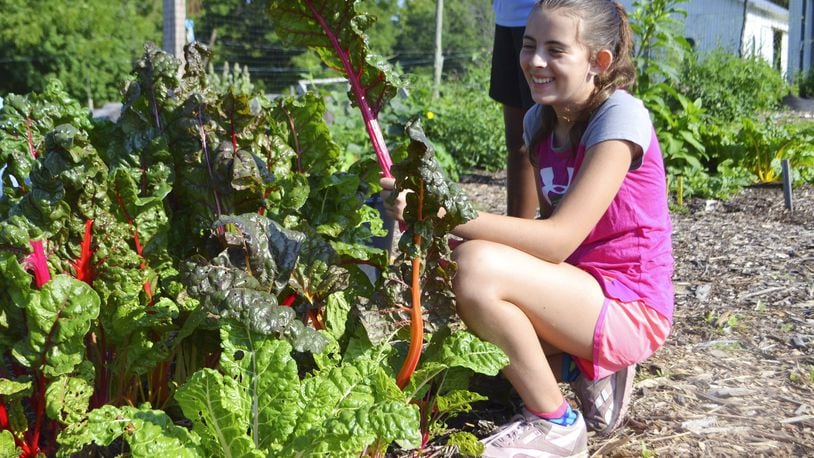>> RELATED: Local garden centers see ‘record-breaking’ sales amid pandemic
The food supply chain has been impacted once again by the current health pandemic, and the concept of victory gardens is gaining traction again.
“Victory gardens have been really important to our country during times of need and stress and this is definitely one of those times,” said Kaitlyn Lowry, Five Rivers MetroParks community gardening coordinator. “It’s a great way for people to stay safe and healthy and not have to worry about going to grocery store as often.”
>> LATEST: Glen Helen could close. What we know now
While scarce toilet paper supplies have been more common than tomato shortages, victory gardens can be both functional and fun.
“Gardening is a great way to get some control back into the food system,” Lowry said. “And any time outdoors really feels like a treat.”
Gardening basics
What to grow as well as when and where to plant are important considerations. According to the United States Department of Agriculture, Ohio is in Gardening Zone 6 — which means many plants can be transplanted or planted in early summer and harvested in late summer.
To keep plants thriving throughout the growing season, adequate water is critical. Plants need one inch of water per week or the equivalent amount of rain. Fertilize plants with compost or organic fertilizers regularly to ensure the plants are well fed.
>> GET ACTIVE: Bird-watching 101: Down-to-earth advice on getting started
Provide support with stakes and trellises for plants that like to climb and produce heavy produce. Remove weeds that rob the soil of nutrients and block the sun from the plants. Mulching your garden will help keep weeds down and maintain the soil’s moisture.
Short on space
You don’t need acres of land to enjoy fresh veggies from your yard.
Raised beds can solve several problems. Constructed with wood or block sides, raised beds are up to two feet from the ground. Because these beds use fresh soil and are raised, you may experience fewer weeds and won’t have to do as much bending over. They can take up as much or as little space as you choose.
>> GET ACTIVE: How geocaching can add a little adventure to your days
Container gardening is also a viable option for small spaces and, even, apartment living. Plastic or terra-cotta pots, planting bags and storage containers can all be used. Create holes in the bottom of the containers for drainage, then fill with two-thirds potting soil and one-third composted manure. Mix these natural materials and then plant your vegetables as you would in a typical in-bed garden.
Family fun
Getting the kids involved will also mean a few more hands for weeding and watering.
“Try planting things that are different colors, like purple carrots, to get their interest,” Lowry said. “And come up with ways to incorporate vegetables into sweet treats you make like bread or brownies.”
>> GET ACTIVE: How to get started paddling in the Miami Valley
Watching the progress from a tiny seed to an edible treat can be a treat for kids and adults alike.
“It’s exciting to me every time I see it,” Lowry said.
If you’re ready to get started or need more information, visit metroparks.org/natureisopen or the MetroParks Facebook page throughout the growing season for resources, tips and tutorials to help you get gardening.
>> RELATED: Want to grow your own vegetables? A master gardener offers some advice
FAMILY VEGETABLE GARDEN 101
Suggestions for a small garden from Five Rivers MetroParks staff:
• 2 large tomato plants
• 1 cherry tomato plant
• 3 pepper plants
• 5 bean plants
• 1 yellow squash or zucchini plan
• 3 basil plants
• 6 lettuce plants
• 6 spinach or greens plants
• If space allows, plant carrots, radishes, onion, herbs, marigolds, zinnias and nasturtiums as well.
About the Author
